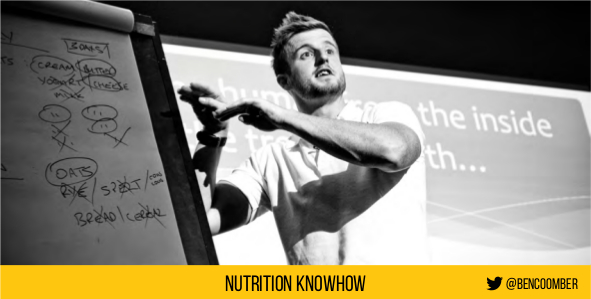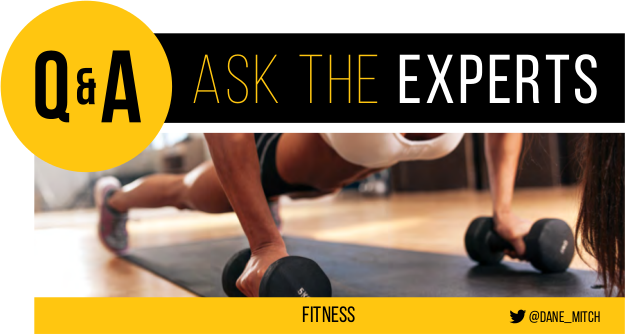BESTFIT Issue 20 – Ask the Experts
BESTFIT Issue 20 – Ask the Experts
Share

Hypertrophy and Kettlebell tricks, with Mark Laws
Myth Buster: Hypertrophy Rep Range
Ever since the 1970’s hypertrophy training has been hugely popular. The textbooks suggest somewhere in the region of 3-5 sets of 8-12 reps…but some people advocate 10 sets of 10. Arnie sometimes did 26 sets per muscle group, with 61 sets on leg day, and he was pretty big. A high-profile body-building coach once got very excited about a challenge I gave him to hit 250 reps in 5 minutes with a 20kg weight because of the ‘pump’ he was going to get.
So why the huge difference in approaches?
Well, it comes down to the fact that there are a LOT of variables, and we are all different! Just because something works for somebody else does NOT mean it will work for you – so before purchasing a ‘cookie cutter’ programme from some goon on Instagram with a six-pack, it’s worth thinking about your own body specifically and experimenting…
My advice? Try low weight/high reps, high weight/low reps, medium weight/medium reps and see how it affects YOU. One thing that is crucial for you all – sort out your diet!
Five things you can do with a Kettlebell
- Swing
Stand one large step behind the kettlebell, reach for the handle with both hands and pull the kettlebell towards the back side. Drive the hips forward explosively, forcing the kettlebell up to shoulder height. As the kettlebell descends keep a minimum bend at the knee and push your hips back towards the wall (not down towards the floor), ensuring your posterior chain is doing most of the work. As the kettlebell reaches your backside your chest should be facing the floor, similar to a ‘good morning’ position.
- TGU
This one can be tough to learn but try this… press a light kettlebell overhead with your right arm and lock the elbow. Never take your eyes of the kettlebell and keep it pointing straight up to the sky. Lunge backwards with the left leg so the knee touches the floor. Drop the left hand to the floor. Bring the left leg through to the front so the left bum cheek touches the floor. Left elbow to floor. Left shoulder to floor. Lay flat on the floor. Then reverse the movement on the way up and switch hands. Simples.
. - Bottom Up Press
Hold the handle of the kettlebell so that the weight is pointing straight up to the sky. Start position will see the elbow tucked in tight to the ribs with your elbow, wrist, fist and kettlebell all in a perfectly vertical line. Test your grip strength and all round manliness by pressing the kettlebell overhead and returning back to the start position as many times as possible.
- Renegade Row
Use two flat-bottomed kettlebells (preferably competition style). Get into a push-up position with one hand on each kettlebell. Hold your body in a solid position from shoulder to ankle, spreading your feet apart to aid your stability. Pull one kettlebell up towards the chest while holding yourself still with the opposite arm. Alternate hands whilst trying to keep your body as still as possible.
- Overhead Squat
Hold kettlebell overhead in one hand, slowly squat down until you opposite hand gets as close to the floor as possible. Allow your upper body to rotate towards the kettlebell as you squat down. Never take your eyes off the kettlebell when its overhead.
www.jordanfitness.com

High-Protein – How and why? Bestfit’s Ben Coomber explains
Ask three different people what a high-protein diet is, and you’ll get three different answers. To some, a high-protein diet means you eat a lot of meat and little else. To others, a high-protein diet means you get 40% of your daily calorie intake from protein, or you multiply your bodyweight in kilos by four and eat that many grams.
A healthy, young and active person who partakes in some form of resistance training on a regular basis should be having around 2-3g of protein per kilogram of bodyweight. This may or may not be a ‘highprotein diet’ depending on who you ask, but it will provide adequate protein for your needs.
Protein, for those unsure, is a term used for a category of compounds found within organic material. The most abundant dietary sources are found in animal products like meat, fish, eggs and dairy, though a nottoo-insignificant amount can also be found in some plant sources.
It’s made up of long chains of molecules known as amino acids, which are the vital ‘building blocks for life’ for every organism on the planet. When you eat a food containing protein, your body breaks it down during the digestive process into these amino acids, which it can then use to make new proteins for use in muscle cells, hormones, hair, skin, nails and bone. Think of it like getting a bunch of Lego models, breaking them up into individual blocks and then rebuilding them into something else.
The government recommends that women have 55g and men 65g of protein per day. So is a high-protein diet needed? A good intake of 2-3g per kilo can be hugely beneficial, and if this sounds appealing, here are my top five protein sources to keep in your kitchen at all times.
1. Sirloin Steak
Red meat gets a bit of a bashing in the media, but it’s an important source of iron, b vitamins, zinc and magnesium. Serve with veggies and a jacket potato, or sliced on top of a toasted ciabbatta with horseradish for a perfect post-workout meal.
2. Greek Yoghurt
Regular natural yoghurt is a great source of calcium, fat-soluble vitamins and live bacteria, which can be really helpful for digestion (though it’s a little high in sugar). Greek Yoghurt has been strained through a muslin cloth to remove a lot of the sugar and liquid, leaving us with a thick and creamy snack high in protein. Opt for full fat if you can fit it within your calorie needs, but fat free is a great option, too.
3. Duck Eggs
Eggs are considered to be a ‘perfect protein’ due to the ratio of different amino acids present within them ideal for human consumption. They’re incredibly versatile, they stay fresh for a really long time compared to meat and they’re relatively cheap. Duck eggs are my choice purely for taste, but if you opt for hen eggs make sure they are from chickens raised with the highest welfare conditions that you can afford. This alters the fatty acid profile of the yolk, but it’s also the right thing to do.
4. Black Beans
Beans are a plant-based protein power house. They’re incredibly cheap, and with a can providing over half of your daily fibre intake in one low-calorie portion, they need to be a part of your arsenal. Add them to stews or a chilli, or simply cook them and stir in some harissa paste for a great side dish for chicken.
5. Whey Protein
Whey protein is sometimes thought of as a supplement, but essentially it’s fortified milk, and is present in baby formula and custard mix. Whey protein is, gram for gram, the cheapest animalbased protein product you can buy. It’s versatile, it never spoils, it’s readily available, it tastes good and it’s rated even better than eggs. Add it to water and shake it up or get more creative and cook with it.

















FOLLOW BESTFIT